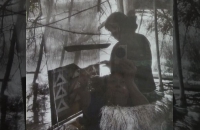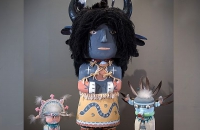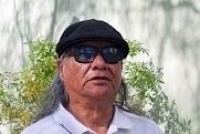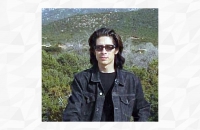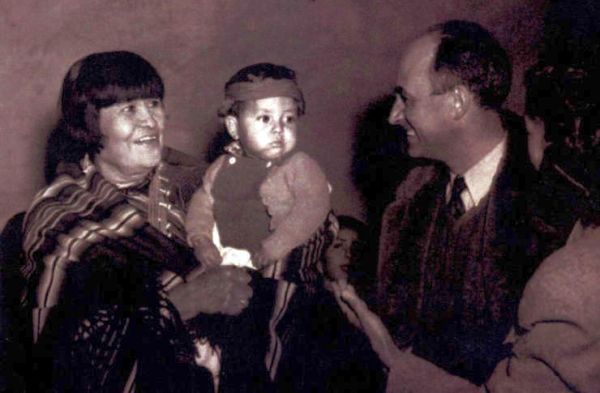
Maria Martinez (1887? - 1980) and her husband Julian did more than discover a method of firing pottery in a low oxygen environment and create a blackened, opulent pottery. They transformed a pueblo and created a movement that benefited Native Americans and spawned an art form worthy of worldwide recognition.
In the early 1900's, Julian was part of an excavation team working with Dr. Edgar Lee Hewett, Director of the Museum of New Mexico. Maria was also aiding, responsible for feeding the excavation team. During the excavation Maria discussed with Dr. Hewett the older pottery and pieces. Julian and Maria worked to create a finish similar to that of the older pottery. Though it is argued they never succeeded, their trials spawned a glowing black pottery. In fact, the early experiment pieces did not have markings. It was not until approximately 1915 that designs were applied. Julian first tried to apply traditional ink to the pottery. However, because of the higher temperatures, the ink would burn off. Julian developed a way to mix ink and clay in order to develop an application that would not burn off during firing.
This was not the first attempt at pottery for Maria and Julian. It is often overlooked that Maria and Julian were already accomplished polychrome potters. What is overlooked is that the earlier pieces of Maria and Julian did not reflect the older decorations. When older pieces were excavated Maria and Julian would take note. Even in the early days, Maria would form the vessel and Julian would paint the vessel. The combined team would help create the black-on-black pottery so famous today.
The designs that Julian Martinez painted onto Maria’s pottery, which have become favorites of San Ildefonso artists, were replicated or inspired by prehistoric patterns. One of his favorites was the Avanyu, or horned water serpent with a forked tongue. The wavy body of the serpent symbolizes water flowing in an arroyo after a storm. The serpent’s forked tongue represents the lightning that accompanies the deluge of life-sustaining water.
The famous San Ildefonso pottery of today has only been brought to prominence by a family, but an entire pueblo. Though Maria could have easily kept the methods a family secret, to be shared with only her children (Adam & Santana, John, Phillip, and Popovi Da), she chose to share her information. Numerous potters, all of various skills, contributed to the rise in prominence of this pottery. The sharing of methods and designs contributed to the wellbeing of the entire pueblo and allowed a pueblo to become self-reliant and with a form of sustenance.


